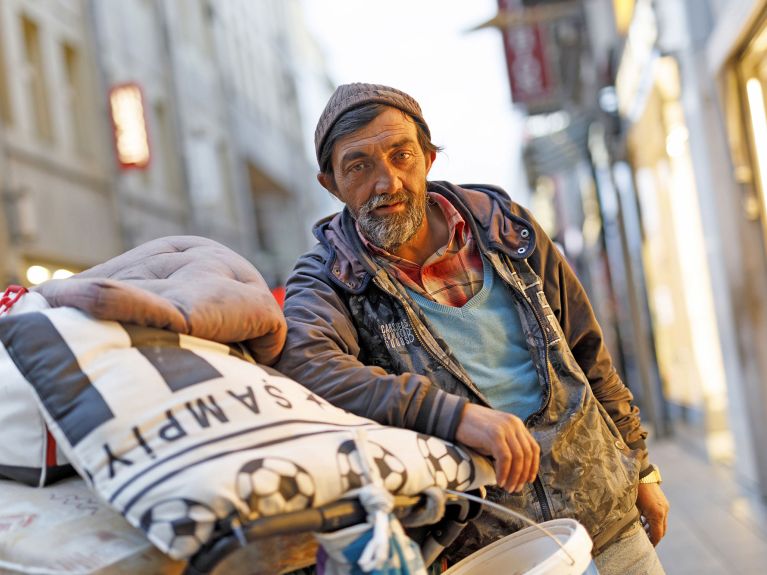Theory and practice
With the US as a role model, Berlin is working harder than any other European city to help its homeless. But the capital’s efforts also create a number of Problems.

The man hit her. He hit her hard and it hurt like hell. But Sabine Müller* accepted the pain. She clung to the illusion that the man who beat her time and again loved her. It was only once he had thrown her out of the apartment – when she found herself on the street, desperate and destitute – that she knew it couldn’t have been love.
Sabine lived on the streets of Berlin for five years. For short periods of time, she stayed at a women’s emergency shelter. That facility had only one shower for all the residents. Today, however, she has her very own shower. She even has her own apartment. It was a welcome stroke of luck.
Apartments for single homeless
Sabine is one of 25 homeless people, including 10 women, who were able to take the step from a rough life on the street to the sanctuary of their own apartment. These people were supported by the Berlin-based projects known as “Housing First für Frauen” and “Housing First Berlin”, two initiatives that organize apartments for single individuals who’ve been homeless for a long time.
For most of these people, the act of finding an apartment they can afford is an exceedingly difficult undertaking. Berlin’s department for integration, labor and social services is heading up the overall project; it spent €143,000 in 2018 and will spend €580,000 in 2019. By the end of 2021, the plan is to get 80 individuals settled in their own apartments.
The idea comes from the US
Housing First is not a Berlin original. The idea comes from the US, where a woman named Tanya Tull developed the first Housing First program in Los Angeles in 1988. Tull was tired of standing idly by and decided to help improve the plight of homeless families with small children. Housing First is now an established aid program in many countries.
But no other city in Europe is as committed to helping the homeless as Berlin. In the winter, the homeless shelter known as Berliner Kältehilfe (aid against the cold) offers 1,200 emergency overnight accommodations.
Homeless are treated in particular clinics free of charge
In another facility, people can charge their mobile phones and even bring their dogs, and anyone who shows up is considered a “guest.” Berlin also has a Kältebus, a bus that collects homeless people in danger of freezing on the streets. A total of 200 places are available all year round for emergency shelter, and homeless people without any health insurance are treated in particular clinics free of charge.
Since 2018, Berlin also has a 15-bed medical station where homeless people who’ve received emergency treatment at the hospital are able to recover for up to four weeks. In general, homeless people in Berlin are tolerated, even if they don’t have legal residency status in the city.
A battle plan to effect social change
The woman responsible for the political side of this commitment has a background in social work and trade unions; Elke Breitenbach of the Left Party is Berlin’s Senator for Social Services. For her, Housing First is part of a larger battle plan to effect social change and get as many homeless people permanently off the streets.
It is a grand humanitarian concept and represents an ideal of charity and brotherly love. The only problem with the theory is that it often comes up against a cold, harsh reality. Indeed, Berlin is an example of how altruism can quickly reach its limits.
Read the whole text on The German Times website
Frank Bachner is a metro editor at the Berlin daily Der Tagesspiegel.